Gaynor Speech-Language Pathologists Emily Jupiter Waldman M,S., CCC-SLP ADHD-CCSP and Aleksandra Berns M.S., CCC-SLP TSSLD have some tips and tricks for maintaining language development skills over the summer months:
As we wrap up another incredible year at the Stephen Gaynor School, we have put together some language-enriched activities that can easily be played with you and your child over summer break. These helpful ideas not only help promote language development, but build and strengthen language at the early childhood, elementary, and middle school levels.
After spending about 180 days learning in school, a long, carefree break is well deserved! However, regression over summer break is more common than you think. Summer regression is a child’s loss of learned academic knowledge that has been acquired throughout the school year. It is important for our students to maintain the skills they worked so hard throughout the year to achieve; finding a happy medium between relaxing and avoiding regression.
Family game night and appealing interactive activities can have a great impact on your child’s language development. By playing some engaging language games, your child will not only be motivated to practice learned language concepts while incorporating social pragmatic language, but also feel like he/she is actually having fun while doing work over the summer.
These helpful ideas not only help promote language development but build and strengthen language at the early childhood, elementary and middle school levels. We’ve put together some language-enriched activities that you and your child can easily play over summer break.
Here are some ways to support your child’s language skills at the Early Childhood and Elementary level. The chart below states some language enriched games for you to try to play with your child over summer break. Keep scrolling for tips for older students!
Note: Any links provided are for information purposes only and do not indicate an endorsement of a particular product or vendor.
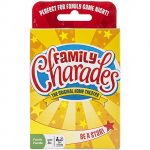 CHARADES
CHARADES
How to play: Place the cards face down. Players take turn drawing a card from the pile and acting it out. The goal of the game is to recognize how others’ facial expressions and body language can change in a particular way to help identify what is being acted. Visual pictures can easily be replaced with words when playing with older kids.
Why it works: Charades is a great vocabulary building game that helps kids learn teamwork, develop their imagination and practice turn taking skills.
I-SPY
How to play: One player chooses a target within the room (e.g., “I spy with my little eye something that is red, hard, and is in this room”). The player on the opposing side then has to ask simple questions to guess what it is the first player spies (e.g., “Is it an apple?)
Why it works: This is a wonderful game that helps develop a child’s imagination, build descriptive vocabulary (shape/color/texture), and enhances question formation while using the 5 senses.
WORD ASSOCIATIONS
How to play: Players have to make connections to a new word in response to a given word (e.g., summer – pool – ocean – blue whale – endangered species, etc.)
Why it works: This is an excellent game to help build up kids’ vocabulary (antonyms, synonyms, multiple meaning words), brainstorm categories and make connections to words. This game also helps with word retrieval and memory.
GUESSING GAME
How to play: Each player takes turn picking up a visual picture card and describing it to the opponent(s). The purpose of the game is to guess the noun, object, place, or person being described.
Why it works: The Guessing Game targets kids’ ability to process and store information. It also targets word retrieval strategies and helps kids interpret categories.
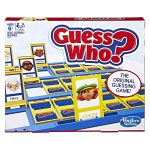 GUESS WHO
GUESS WHO
How to play: Guess who your opponent has and you win! In order to play, the child must be able generate a meaningful question as well as process a given question before making a decision to put down a piece.
Why it works: The classic game of Guess Who continues to be a hit among all kids. This wonderful describing game not only targets listening comprehension skills but logical and deductive reasoning (understanding negations). It also targets following directions, turn-taking, ability to generate questions and make inferences.
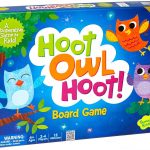 HOOT OWL HOOT
HOOT OWL HOOT
How to play: Shuffle the cards and place the owls on start. This is a cooperative game so all the players must work together trying to reach the same goal. Kids are encouraged to talk about their card aloud and as a team determine and plan the best way to move the owls in the nest before the sun comes up.
Why it works: Hoot Owl Hoot is game that involves cooperative play, turn taking skills and following directions. It also targets executive function skills, shared decision-making and problem solving skills.
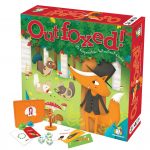 OUTFOXED
OUTFOXED
How to play: All players work together by taking on the role of a detective trying to find the thief who stole “the chicken pot pie” before the fox advances down the path and escapes.
Why it works: Outfoxed is a great cooperative game to help kids make inferences, problem solve, negotiate, and use deductive reasoning.
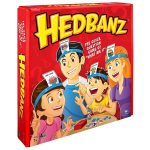 HEADBANDZ
HEADBANDZ
How to play: Players take turns placing a card into the clip of the opponent’s headband. Figure out which picture is on your head by asking questions (e.g., “Am I an animal? Do I have wings? Can I be eaten?” etc.)
Why it works: Headbandz is great in organizing categories, describing, word association and use of adjectives. It also targets words retrieval, critical thinking and ability to make connections.
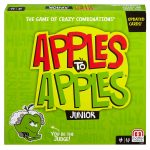 APPLES TO APPLES JR.
APPLES TO APPLES JR.
How to play: The object of the game is to get the most “green cards.” The judge deals 7 “red cards” to each player and then flips over a green card. Players must throw down a card from their pile that best describes the green card. Plays can justify their reasoning and the judge decides who won the green card for that round. The game continues as each player gets a turn being the judge.
Why it works: This is a fantastic game that builds vocabulary, enhances understanding of synonyms and antonyms, as well as parts of speech. Apples to Apples Jr. is a great way to have kids use persuasive language by justifying their response while making connections to a given word.
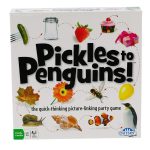 PICKLES TO PENGUINS
PICKLES TO PENGUINS
How to play: Each player is given 4-5 picture cards, either side up. Using full sentences, players try to get rid of all of their cards by figuring out what their cards and the card that is being played have in common. Make a logical connection (shape, category, color, size, texture, etc.) and you win!
Why it works: Pickles to Penguins is an awesome group game that targets words associations, categories, builds vocabulary, and strengthens verbal reasoning skills while formulating grammatically and syntactically correct sentences.
For older children in Elementary and Middle School, there are many ways to support language skills over the summer, even if they are away at camp.
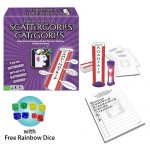 SCATTERGORIES CATEGORIES
SCATTERGORIES CATEGORIES
How to play: Each player gets a notepad and pencil, which are included in the game set. A player chooses a “category card.” Each participant writes down the category on the side of the notepad vertically. The object of the game is to write down one item that starts with each letter on the notepad.
Why it works: This game is a great way to help kids with executive functioning and organizational skills. It also targets word retrieval strategies. For kids who have a word “on the tip of their tongue,” Scattergories Categories will certainly exercise their brains!
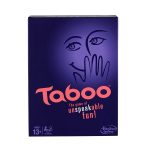 TABOO
TABOO
How to play: Get your teammates to say ‘Brain Freeze’ without saying Ice Cream, Headache, Eating, Cold or Fast!
When playing the game, the easiest clues are forbidden. Players race against the timer as they try to give creative and carefully-worded clues to get team players to guess words fast. But don’t mention unmentionables, or your team loses the point.
Why it works: Taboo is a game that involves teamwork, creativity, and lots of language skills! Understanding and recalling clues, generating clues, describing, perspective taking, and inferencing skills, are just a few!
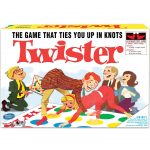 TWISTER
TWISTER
How to play: Players spin the spinner and put their hand or foot on the color spot indicated.
Why it works: Twister in its ordinary form is a following directions game, but is actually quite versatile.
For an added language twist, use masking tape to write on the dots. For reading practice, write down sight words. For vocabulary practice, write down some juicy nouns, verbs, and adjectives. For word retrieval and describing practice, write down categories.
Before taking their turn, each player has to read the word, make up sentences with the vocabulary term, or name objects in that category.
WOULD YOU RATHER?
How to play: This game can be purchased as an App from the App Store. Players are in a quandary as they take turns making difficult, and sometimes grueling, choices!
Why it works: Would You Rather? targets verbal reasoning skills.
Cause and effect, comparing and contrasting, and predicting skills are all incorporated into this simple game. These skills are crucial for all academic subjects, particularly in preparation for tests that involve verbal reasoning skills such as the ISEE, the ACT, or the SAT.
MAKE A SCRAPBOOK
How to play: Make a scrapbook or photo album of favorite summer memories! Paste in ticket stubs, wristbands, menus, and selfies! But, don’t forget to include a caption!
Why it works: Photo albums and scrapbooks are motivating for kids because they get to look back over their favorite summer memories. Documenting the experiences as they happen can help kids capture and remember the smallest details.
Make captions that capture the funny, scary, and even mundane experiences of summer!
